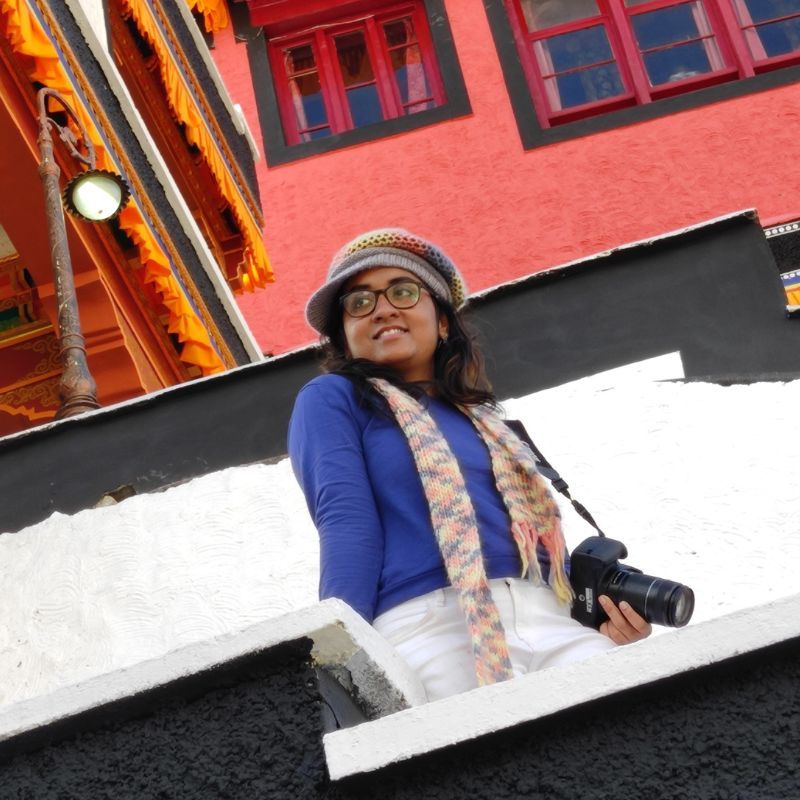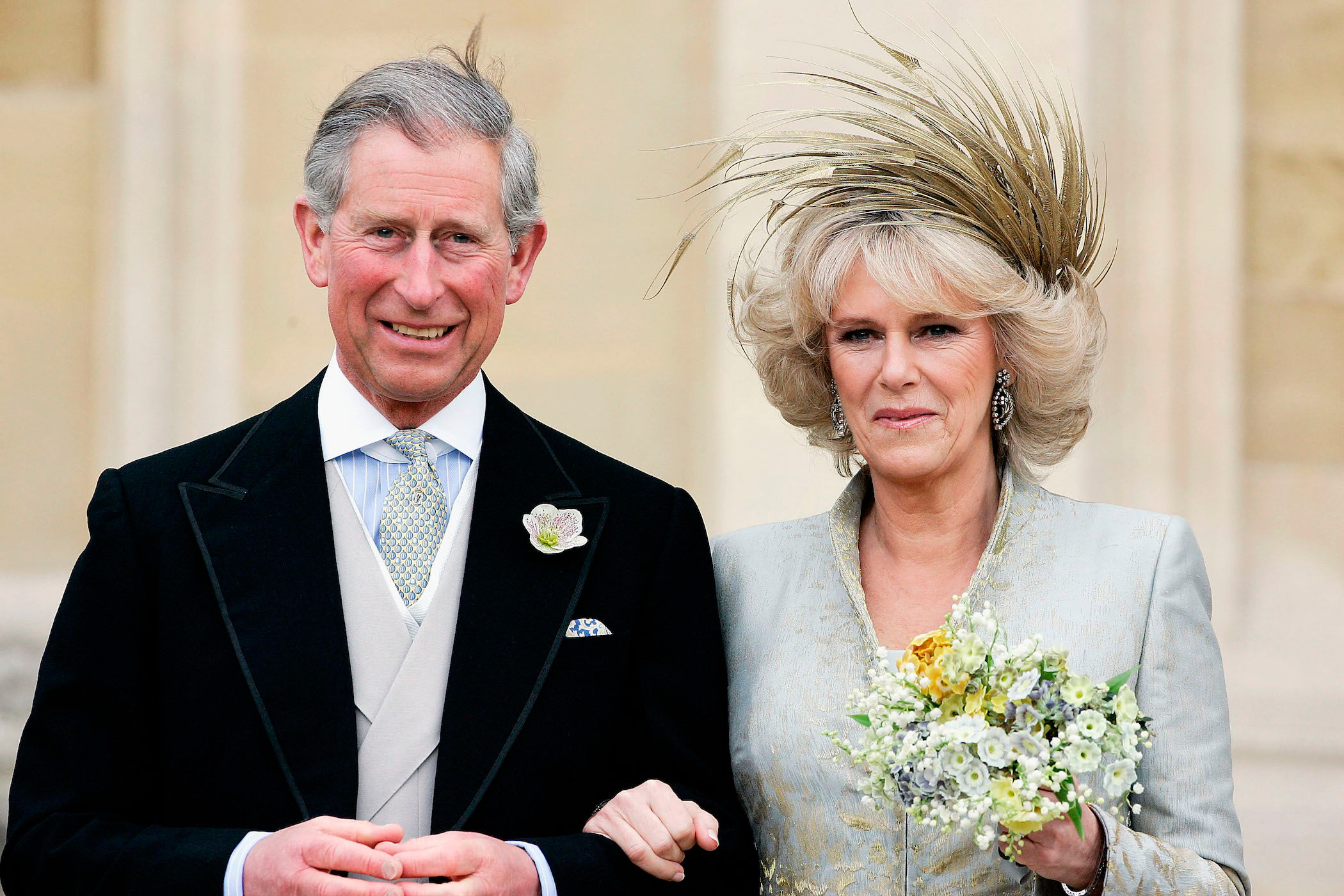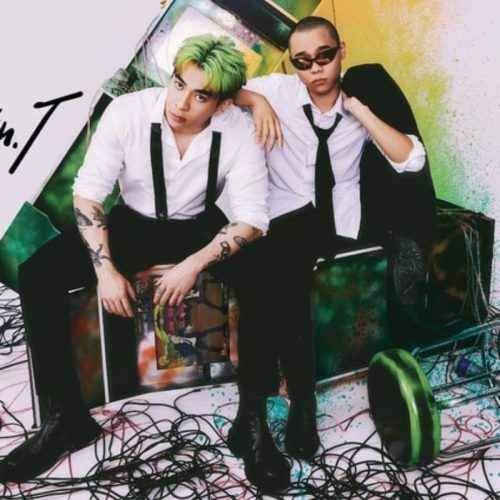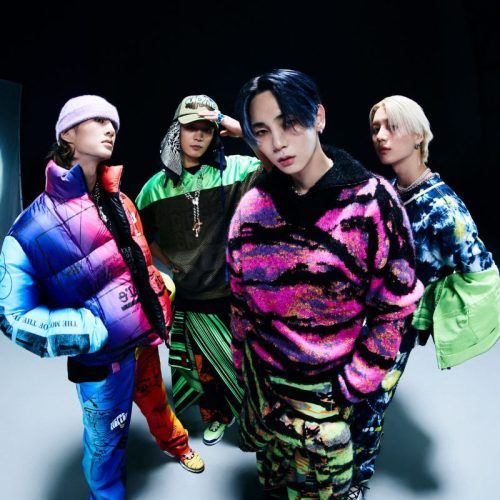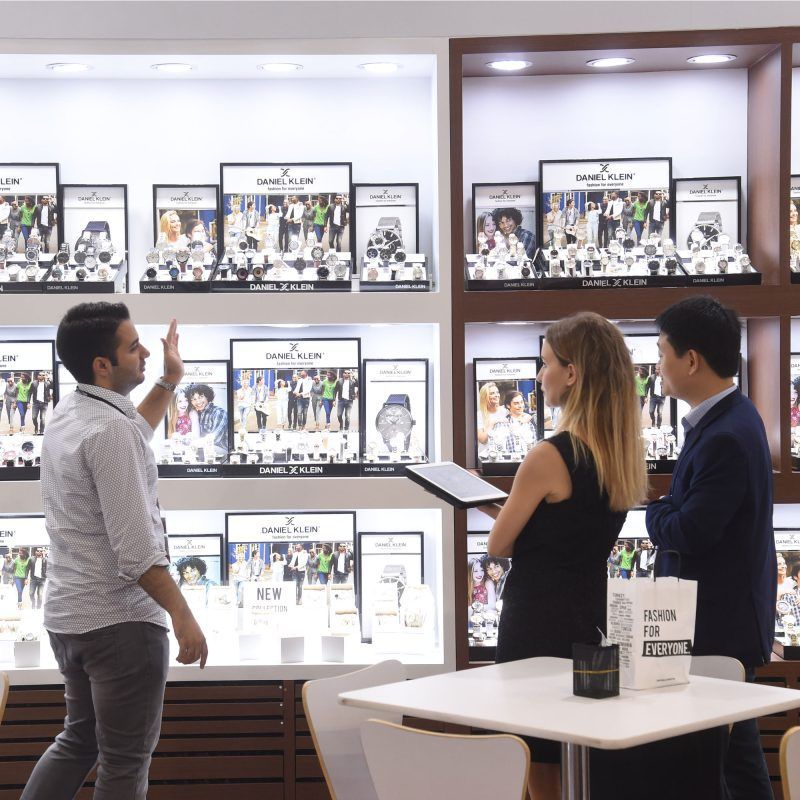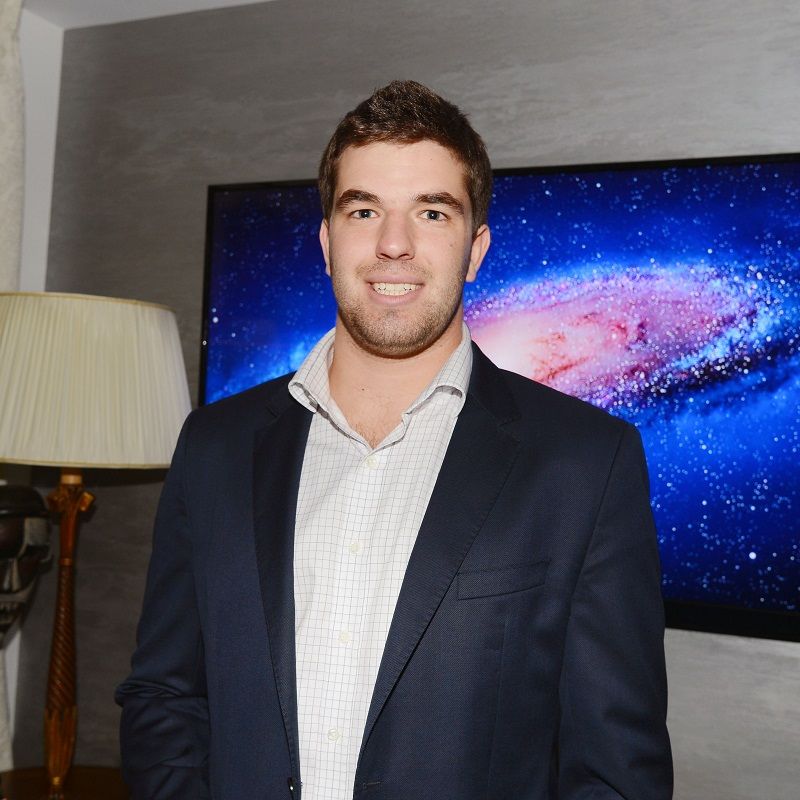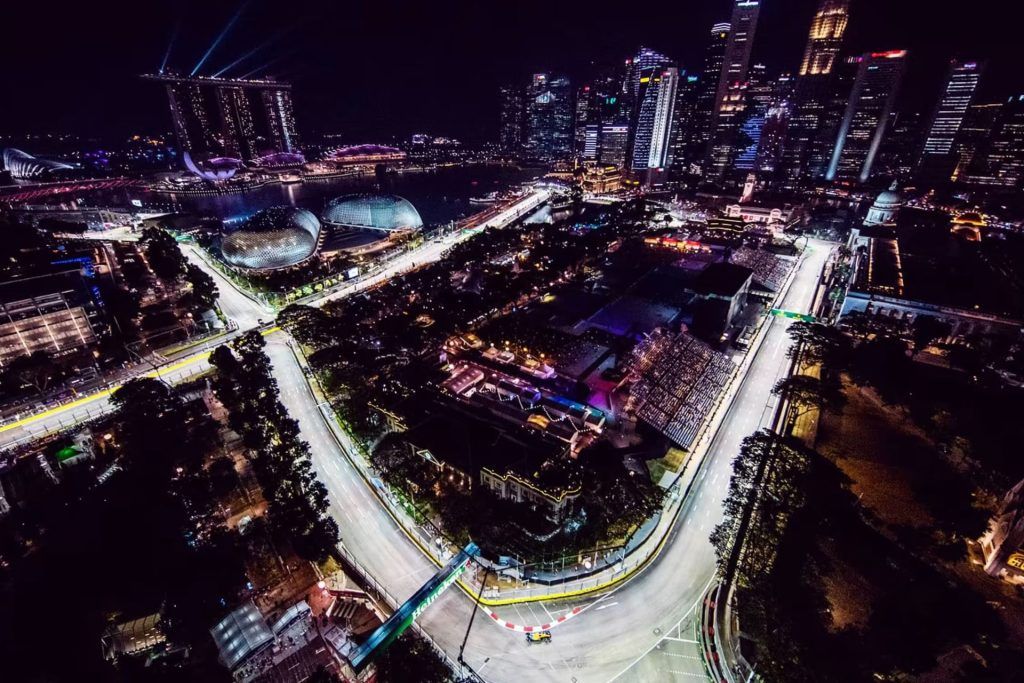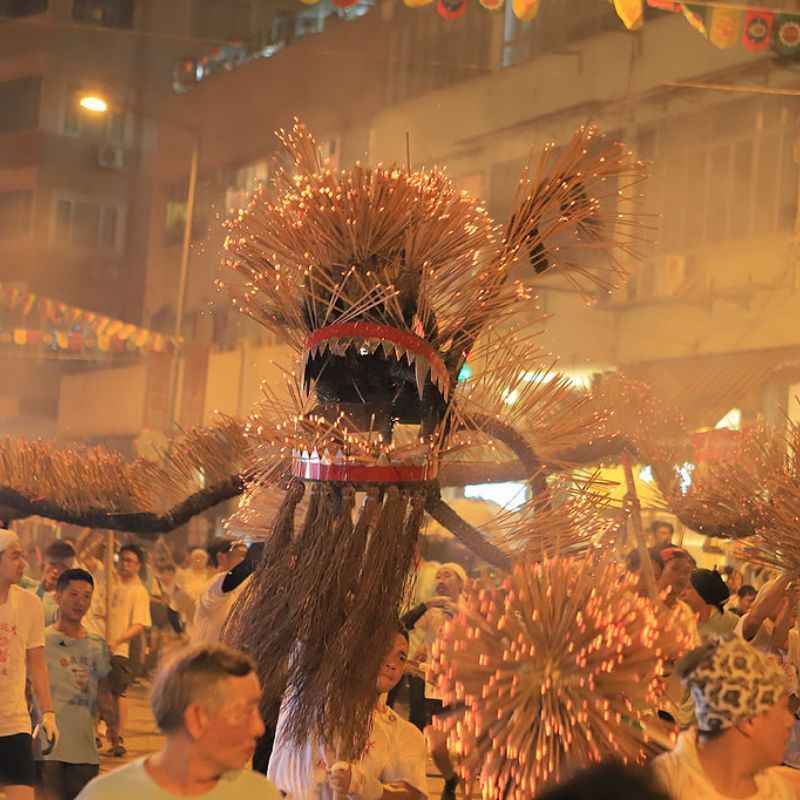The entire world has its attention turned towards the United Kingdom as the coronation of King Charles III and Queen Consort Camilla will take place at Westminster Abbey on 6 May 2023. As a new chapter in the British Royal family begins and Buckingham Palace welcomes its new head, let us look at all the details leading up to the Coronation Service and the celebrations related to the momentous event.
Since the passing of Queen Elizabeth II on 8 September 2022, King Charles, who was known as the Prince of Wales, has become the oldest to ascend the British throne. And while he has started his duties and services as the new monarch, the religious coronation ceremony will take place to formally place the Imperial State crown on him. From The King’s procession to the monarch travelling in the Royal Diamond Jubilee State Coach and concert at Windsor Castle, there are many events planned in the UK around this time.
Not just the joyous arrangements but other aspects of King Charles’ coronation are also gaining media attention. While Prince Harry is expected to be present, his wife Meghan Markle will give it a miss. Additionally, there have been questions about the monarch’s role and the relevance of the institution in the 21st century.
Hence, the coronation of King Charles III, code-named Operation Golden Orb, comes as a big message for the world about how the British Royal family continues to exercise its stronghold and pave the way for a more modern approach to the age-old tradition.
The coronation service will start at 11 am (6 pm HKT) and will be broadcast across the world by BBC and BBC Radio.
King Charles III’s coronation: All the events and other details
The coronation of a monarch is the most important ceremony for the institution. Traditionally, it is a spiritual and religious event of crowning the head of state, which is coupled with the physical act of placing the crown on the ruler’s head.
In the British connotation, the coronation oath formally announces The King as the head of the Church of England and all titles as well as vests in him all powers.
However, a formal coronation may not always be necessary for the monarch to continue with their duties. King Edward VIII ascended with no coronation and King Charles automatically took the throne right after the death of his mother. He had become the heir apparent after Queen Elizabeth II’s coronation in 1952.
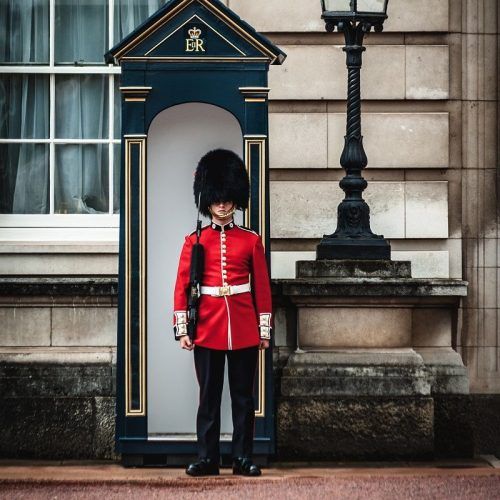
10 Rules You Will Not Believe Are Followed By The British Royal Family
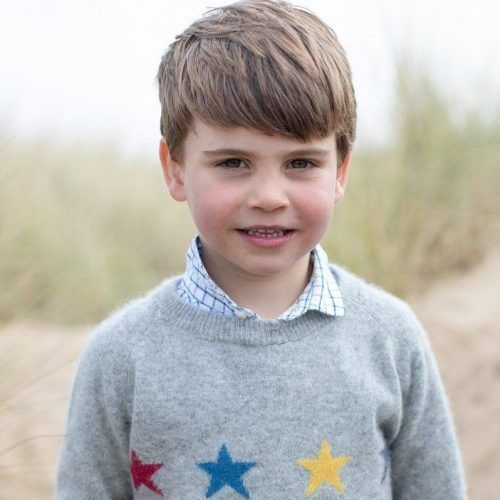
The Next Generation Of The British Royal Family Tree: Princess Charlotte, Master Archie And More
The king’s coronation invitation
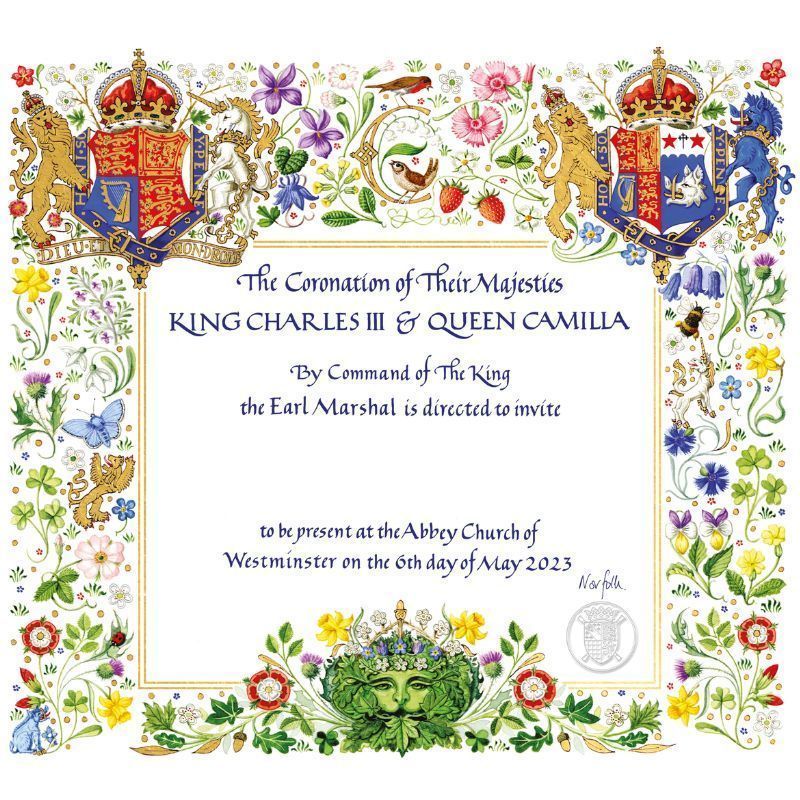
Published on 4 April 2023, King Charles’ coronation invitation card is steeped in British symbolisms and is a homage to the country’s nature and folklore. The card is designed by Andrew Jamieson, a heraldic artist and manuscript illuminator, whose works reflect ideas from the chivalric themes of Arthurian legends. He is also a Brother of the Art Workers’ Guild, where The King is an honorary member.
The card is a regal work of art with the original piece featuring hand-painted watercolour and gouache. The design will be printed on recycled cards, with gold-foil detailing and sent to over 2,000 guests.
A detailed design of a Green Man, emblematic of spring and rebirth, is covered with a verdure of oak, ivy and hawthorn leaves. Several native flowers also border the card — a British wildflower meadow theme is created on the sides featuring lily of the valley, cornflowers, wild strawberries, dog roses, bluebells and a sprig of rosemary. The flowers appear in clusters of three, showing King Charles is the third monarch of his name. A bee, a butterfly, a ladybird, a wren and a robin can also be spotted.
The coronation emblem has a lion, a unicorn and a boar which are taken from the coats of arms of King Charles III and Queen Consort Camilla and appear among the flowers. Her Majesty’s arms are enclosed by the Garter, representing her induction as a Royal Lady of the Order of the Garter in 2023.
The King’s Coronation Procession: Carriage, journey and the route
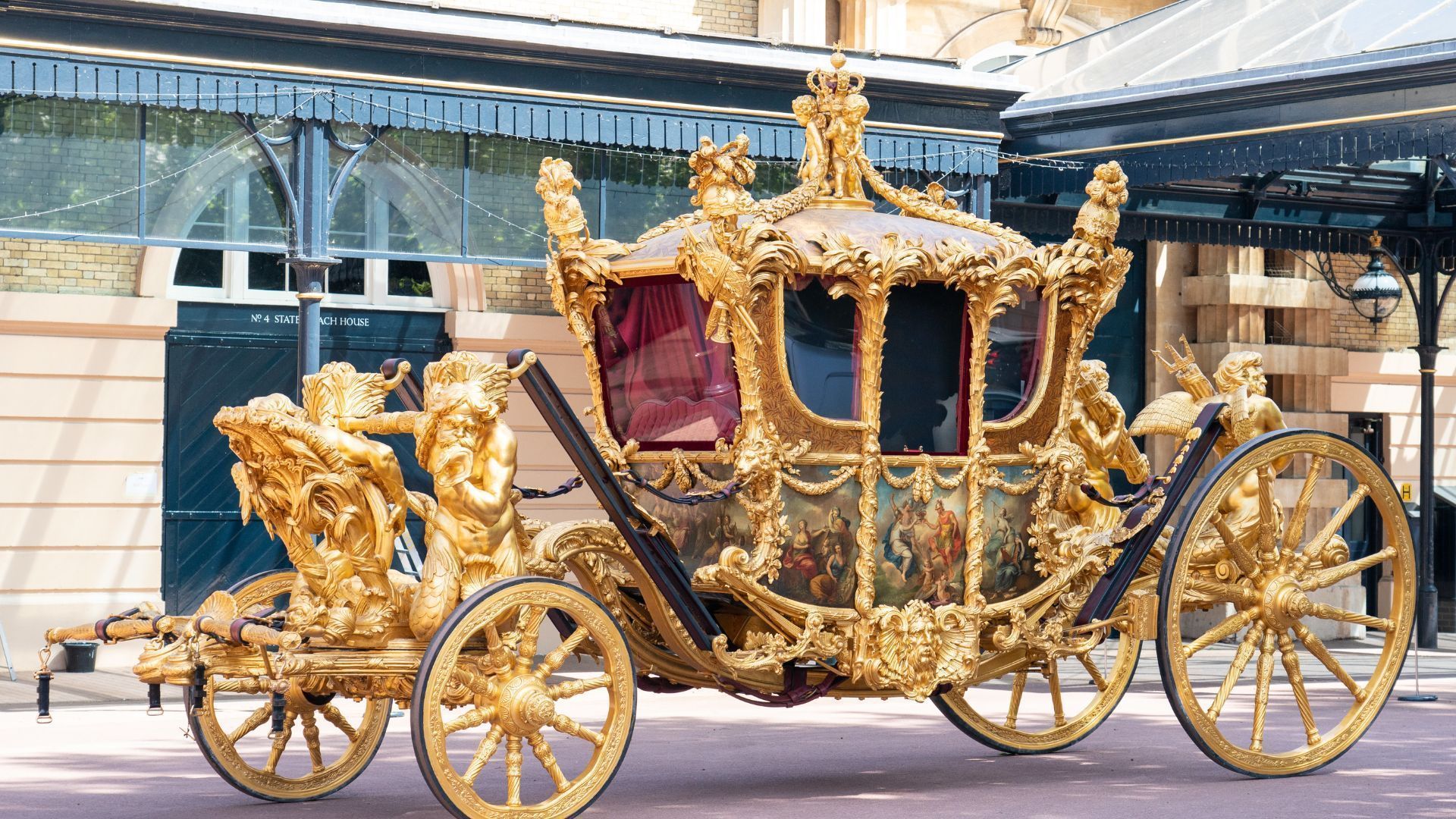
The royal event marks a grand show, beginning with Their Majesties’ drive from Buckingham Palace to Westminster Abbey, known as the King’s Procession. King Charles and the Queen Consort will travel in the Diamond Jubilee State Coach, which was created in Australia for the late Queen Elizabeth II as a tribute to her 60 years of reign and delivered in 2014. It made its debut at the State Opening of Parliament that year. The modern horse-drawn carriage has luxury silk upholsteries, air conditioners and electric windows.
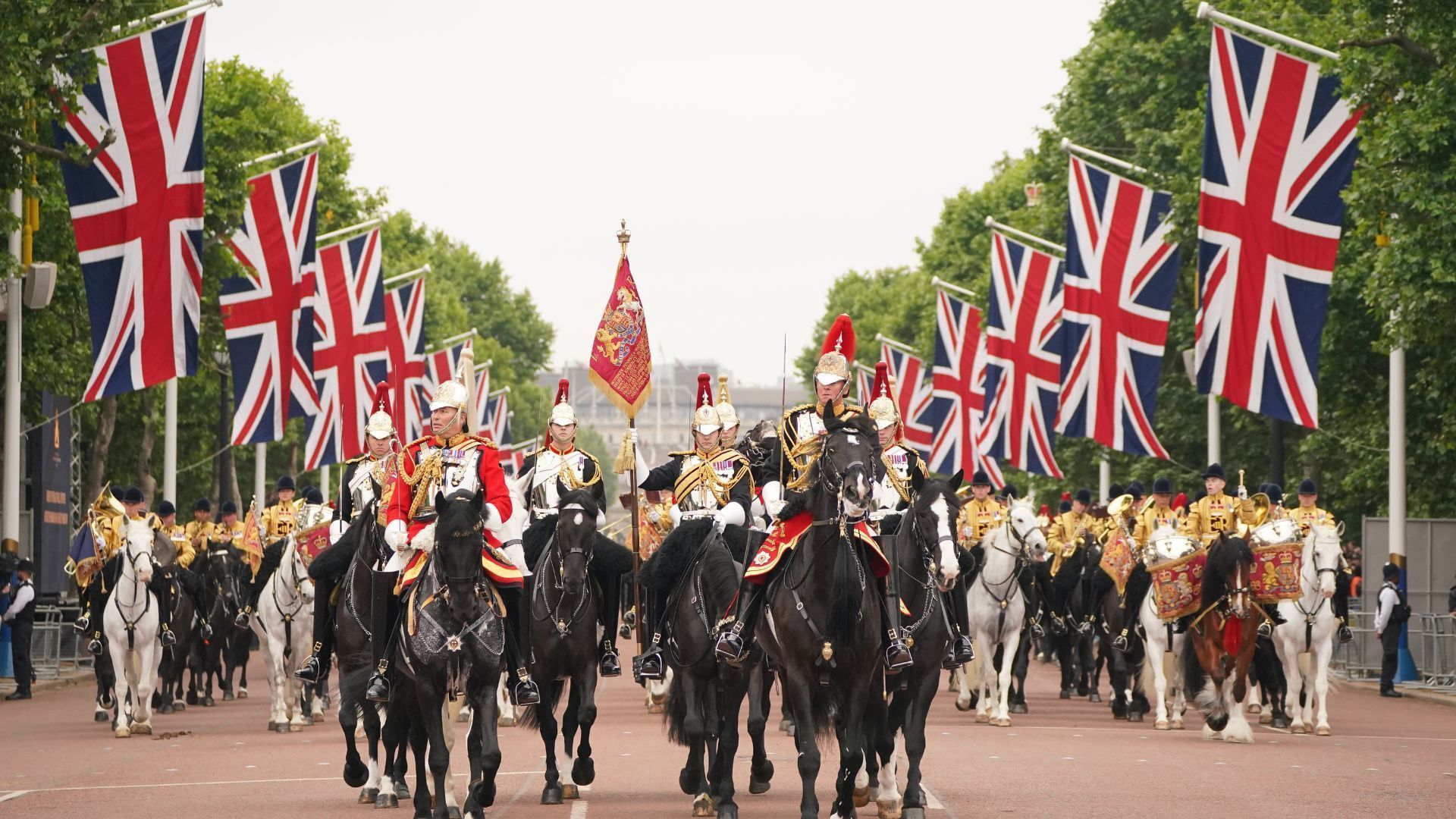
The King’s procession will be a shorter route of about 2 km as compared to the 7 km-long journey taken during the late Queen’s coronation. As per BBC, the 1953 event had 16,000 participants, and the procession took 45 minutes to cross any stationary point.
The procession shall depart Buckingham Palace from the Centre Gate and go down the Mall via Admiralty Arch and Whitehall. It will then turn around the east and south sides of Parliament Street and arrive at Westminster Abbey. The King’s procession will be accompanied by The Sovereign’s Escort of the Household Cavalry.
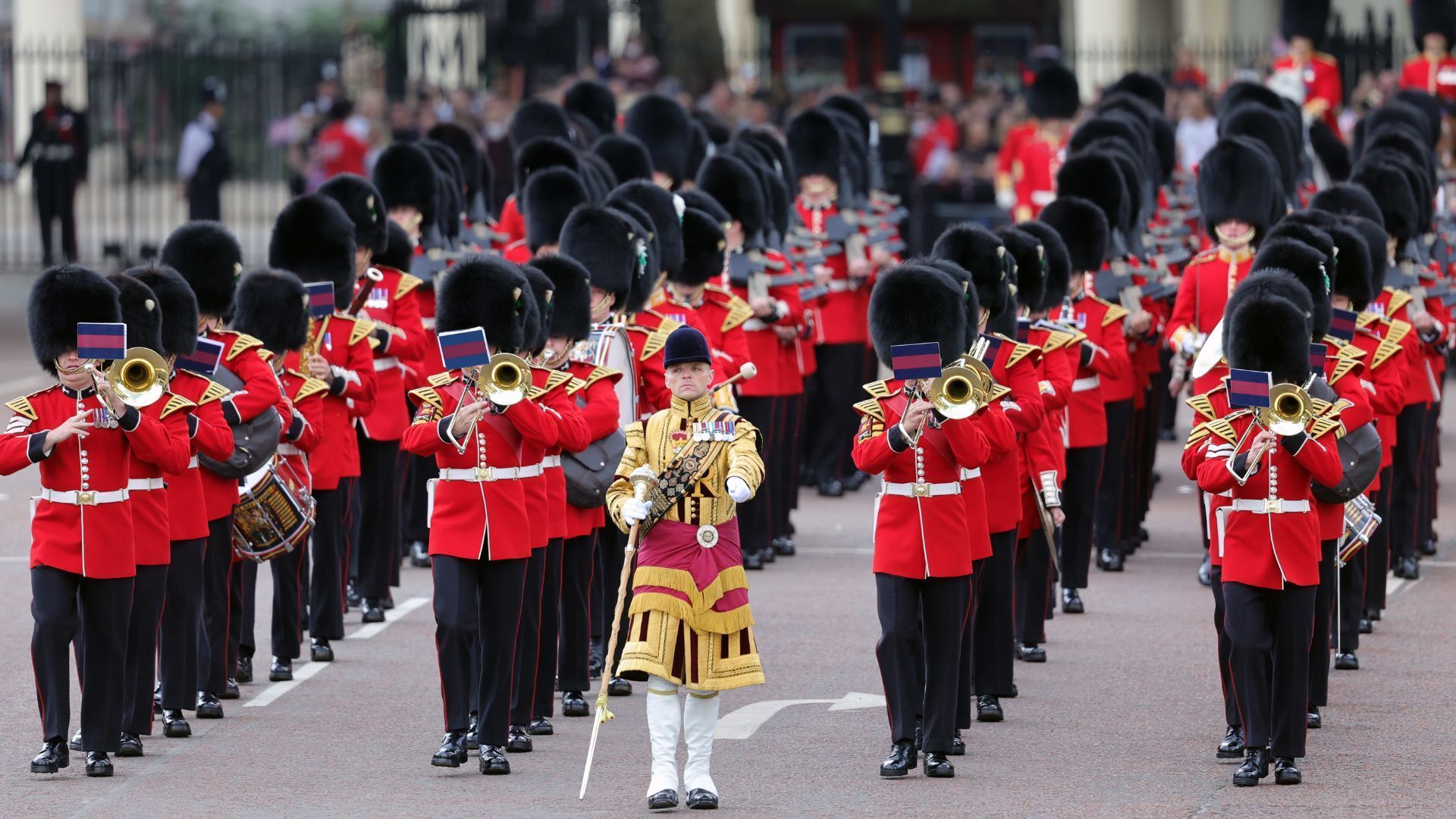
The journey back from Westminster Abbey after the service, termed the Coronation Procession, will be an even larger and grander affair. This time, The King and The Queen Consort will travel in the Gold State Coach, which has been a part of every coronation since King William IV in 1831. They will follow the same route and “will include Armed Forces from across the Commonwealth and the British Overseas Territories, and all Services of the Armed Forces of the United Kingdom, alongside The Sovereign’s Bodyguard and Royal Watermen,” mentions the British Royal website. Other members of the Royal Family will also join the Coronation Procession.
As per the BBC, “More than 6,000 armed forces members will take part, making it the largest military ceremonial operation in 70 years.”
Upon their return, Their Majesties and members of the Royal family will make an appearance at the Buckingham Palace balcony.
The Coronation Service: What happens during the ceremony
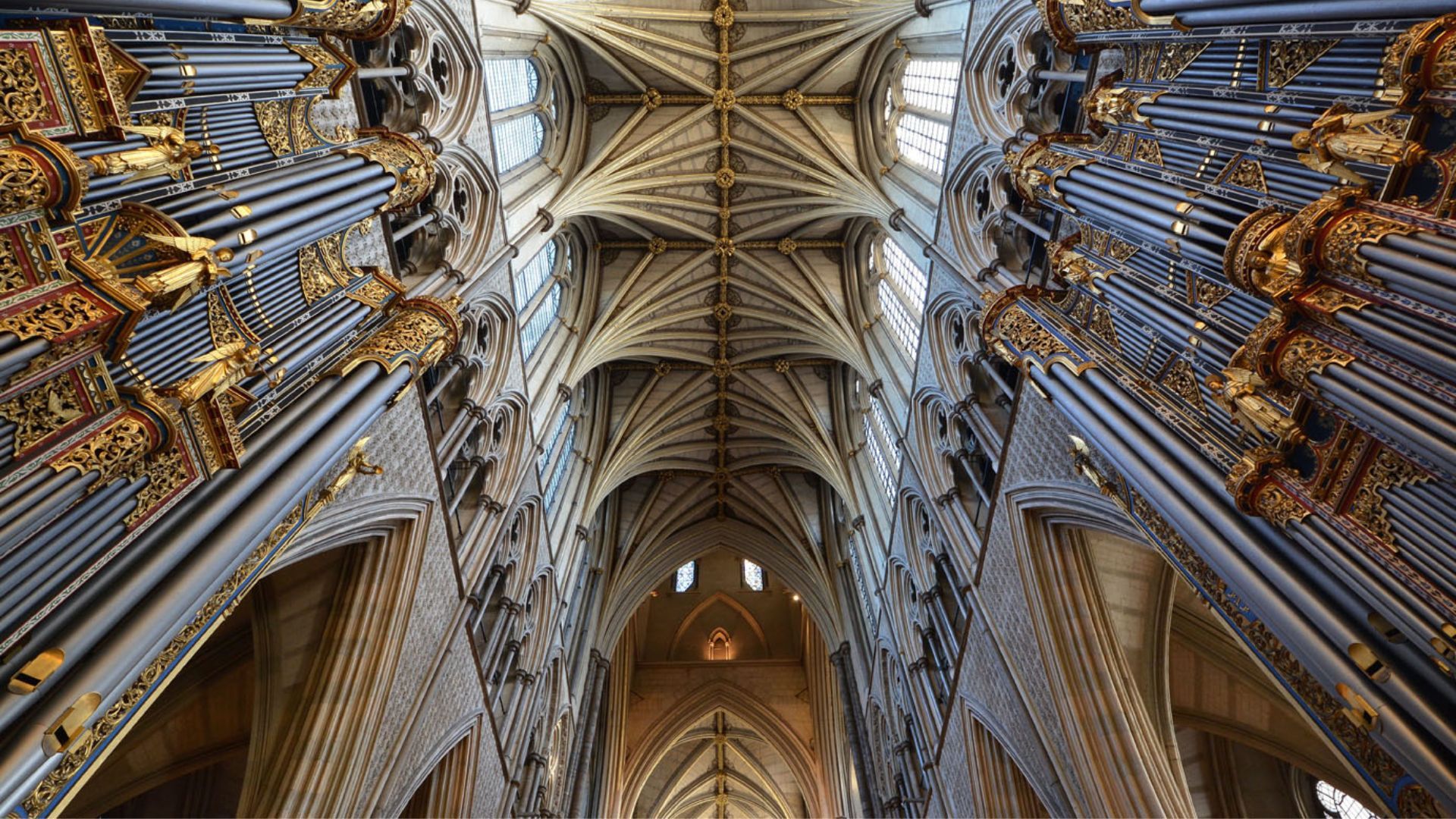
The official ceremony always comes a few months after the new monarch ascends the throne, and Westminster Abbey has remained the sacred site for over 900 years post the Norman conquest in 1066.
The Palace said, “The Coronation is a solemn religious service, as well as an occasion for celebration and pageantry.” It will be conducted by the Most Reverend Justin Welby, Archbishop of Canterbury, and in 2023, King Charles III wishes to have a diverse audience representing different cultures, faith and backgrounds at the event.
There are several stages and rituals to the ceremony — beginning with ‘the recognition’. During this, the monarch stands next to the 700-year-old Coronation Chair. The Archbishop presents him to the congregation, who shouts in union “God Save The King.”
This is followed by the oath-taking ceremony where the Sovereign pledges to protect the laws of the land and uphold the Church of England. The words and structure of the oath have undergone modifications in keeping with the changing nature of times and relevance.
After this, the monarch is “anointed, blessed and consecrated” by the Archbishop, while he removes the royal robes and sits on King Edward’s chair (it was made in 1300 and has been used by every ruler since 1626). A gold cloth canopy is held by the four Knights of the Garter to hide The King from view. A Harper’s Bazaar report says, “The Stone of Destiny, an artefact seized from Scotland by King Edward I, will lie under the chair.”
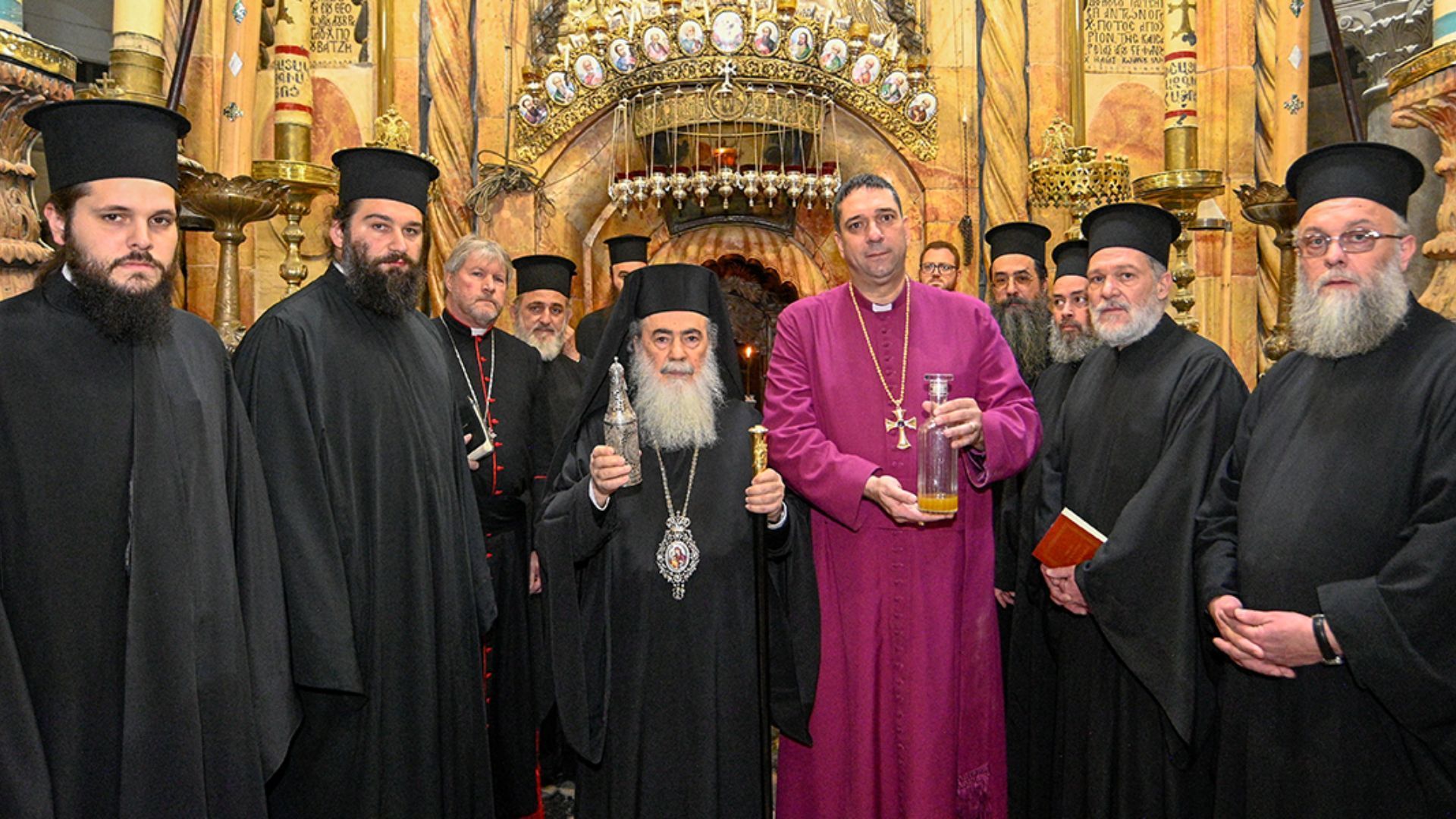
The holy oil for the anointment of King Charles III is specially consecrated in a ceremony at The Church of the Holy Sepulchre in Jerusalem. The patriarch of Jerusalem, His Beatitude Patriarch Theophilos III, and the Anglican Archbishop in Jerusalem, The Most Reverend Hosam Naoum are involved in preparing the holy oil.
It is made with olives that are harvested in two groves on the Mount of Olives, at the Monastery of Mary Magdalene and the Monastery of the Ascension. The monastery is also the site of the burial of King Charles III’s grandmother Princess Alice of Greece. Essential oils of sesame, rose, jasmine, cinnamon, neroli, benzoin and amber, along with orange blossoms, are used to scent the oil. The same consecration will be used to anoint Queen Camilla (Queen Consorts have typically used Queen before their names after the coronation, mentions CNN) as well.
The anointment is followed by the Investiture, where The King is presented with the Royal Orb, which represents authority; the Sceptre, which denotes power; and the Sovereign’s Sceptre, which is a gold rod with a white enamel dove depicting fair justice and mercy. After these rituals, the monarch will be crowned king as the Archbishop places St. Edward’s crown on his head.
The final stage of the Coronation is the enthronement and homage. King Charles will shift to the throne from the Coronation Chair and all princes, senior members of the family and peers will kneel to show allegiance.
As per a 2022 statement by the Palace, Her Majesty Queen Consort will be crowned alongside His Majesty King Charles III. As a first, she has opted out of a custom-made crown and will be coronated with Queen Mary’s crown.
What will King Charles III and Queen Consort Camilla wear to the coronation ceremony?
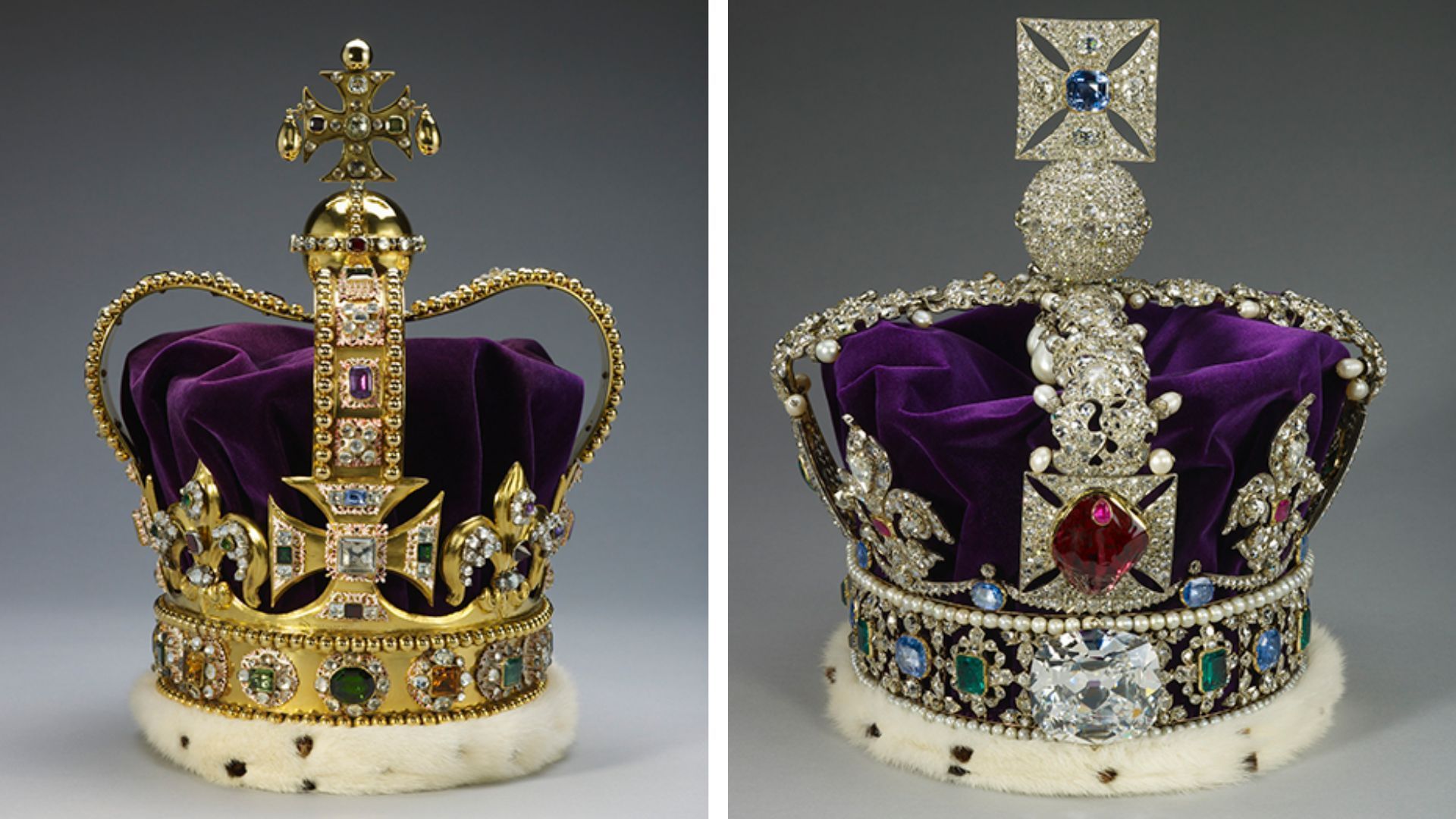
In most likelihood, King Charles will arrive in his military attire, says The Telegraph, making it a more modern statement as compared to the silk breeches and stockings of earlier kings. His Majesty will enter Westminster Abbey in the Robe of State, also called the Parliament Robe, and then wear a number of royal and sacred garments throughout the ceremony.
He will be crowned with St. Edward’s crown which is made of a solid gold frame studded with rubies, amethysts, garnets and sapphires. It also flaunts four crosses-pattée, four fleurs-de-lis and two arches. The heavy crown is also fitted with a velvet cap with an ermine band. It was originally created for the coronation of King Charles II in 1661 and was worn by Queen Elizabeth II in 1953 as well.
However, King Charles III will leave wearing the Imperial State Crown, which is also an example of fine artistry. Featuring a velvet cap and an ermine band, it also has 2,868 diamonds in silver mounts, 17 sapphires, 11 emeralds and 269 pearls. This headpiece is famous for holding the Cullinan II diamond, also known as the Second Star of Africa. It sparked controversy as a symbol of the Royal family’s loot of colonised countries.
The Imperial State Crown was made for King George VI during his coronation in 1937 and was used in place of the one made for Queen Victoria in 1838.
To avoid further controversies pertaining to Briain’s colonising days, Queen Mary’s crown, which The Queen Consort will be wearing, will not feature the invaluable Koh-i-Noor diamond. The rock is one of the largest single-cut diamonds in the world and formerly colonised nations such as India, Pakistan and Afghanistan have claimed it. The precious stone will be replaced by the Cullinan III, IV, and V diamonds. However, historians have reportedly said that they are mined from South Africa and are emblems of Britain’s imperialism.
Guests at the Coronation
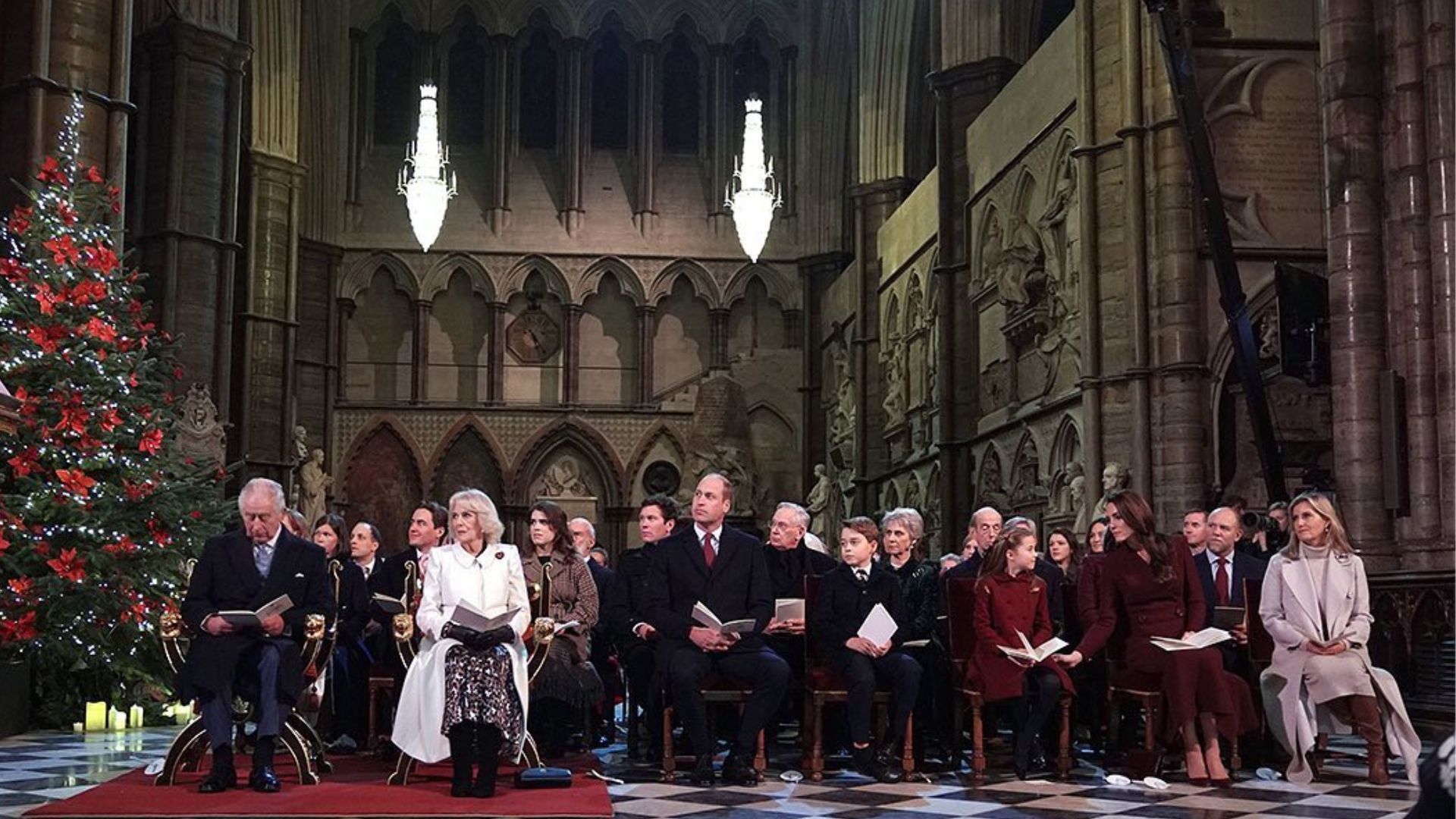
Being a State event, the guest list for the coronation ceremony will be made by the government. Eminent dignitaries include the prime minister, representatives from the Parliament houses, heads of state and other royals from across the globe.
The eight Pages of Honour are chosen to participate in the procession in Westminster Abbey. Of them, the Pages of His Majesty are the King’s grandson His Royal Highness Prince George of Wales, Lord Oliver Cholmondeley, Master Nicholas Barclay and Master Ralph Tollemache. For the Queen Consort, the Pages are her grandsons Master Gus and Master Louis Lopes and Master Freddy Parker Bowles, and Her Majesty’s great-nephew, Master Arthur Elliot.
Prince William and Kate are also very excited about the event and are extremely proud and elated as parents since Prince George is a Page. They will also be present at the ceremony.
Prince Harry has confirmed that he will be attending the event, albeit the Duchess of Sussex will stay back in the US as it is the fourth birthday of their son Prince Archie. It will also be the first time that the Duke of Sussex will be seen with his family in public after publishing his memoir Spare. The Duchess of York Sarah Ferguson will also not be attending. Although US President Joe Biden will not be present, First Lady Jill Biden will be attending on his behalf.
The 2,000 invitees to the Coronation include 850 community representatives for their charitable endeavours and recipients of the British Empire Medal for their hands-on community service.

Prince Harry’s Net Worth: Looking At His Expensive Purchases And Assets
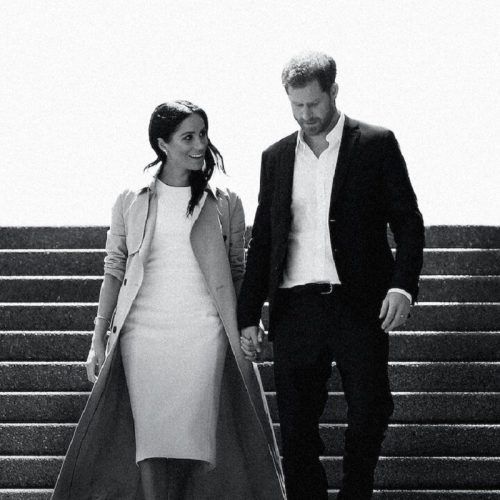
Music at the Coronation
In keeping with the gravity of the ceremony, the music for the historic event is chosen by King Charles himself. Besides a Coronation anthem composed by Andrew Lloyd Webber, titled “Make a Joyful Noise,” 12 newly commissioned music pieces have been composed for the event, the British Royal website announced on 16 April.
They provide a more contemporary take on traditional music and articulate the best offerings from some of the most noted living names across the classical, sacred, film, television and musical theatre fields. The pieces show a wide range of compositions created for orchestra, solo voice or choir renditions.
King Charles III’s coronation will have songs in Welsh, and Greek Orthodox music will be played by Byzantine Chant Ensemble in memory of Philip.
While acclaimed opera singer Bryn Terfel will be one of the soloists, a gospel choir and choristers from Westminster School will perform as well. A drive to hire bell-ringers has also been launched. The orchestra will be conducted by Antonio Pappano and led by Vasko Vassilev, with arrangements by Trittico.
Coronation Weekend: Concert, Big Lunch and more
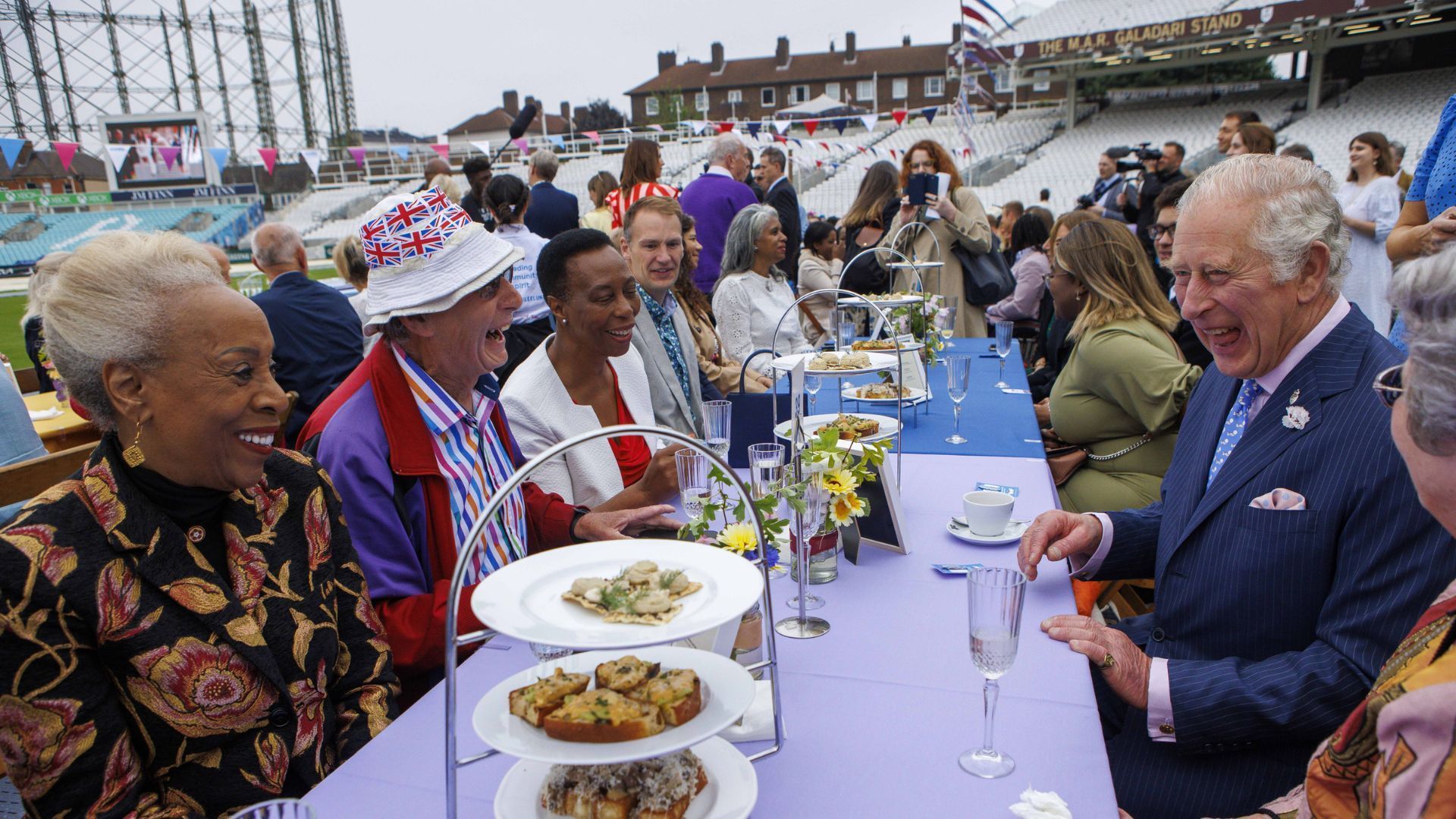
The Coronation Day comes to an end with Their Majesties appearing on the Buckingham Palace balcony. After this, the weekend is lined with a number of events followed by holidays.
A grand Coronation concert will be held at Windsor Castle on 7 May, which will be telecast live by BBC and BBC Studio. Though a full lineup is yet to be released, the BBC states the star-studded event will be graced by celebrities like Katy Perry, Take That and Lionel Richie. Free tickets were made available to the public via a ballot system.
During the programme, a ‘light up the nation’ event will take place where iconic landmarks will be lit up in honour of The King and The Queen Consort.
On the same day, the UK will host a Coronation Big Lunch, where people will share food and have fun. The Prime Minister will host a big lunch at 10 Downing Street and guests will include community workers.
Typical British street parties will be held and bars and pubs will remain open for extra hours over the weekend. People are also urged to participate in volunteering service at the Big Help Out event from 8 May.
Bank holiday
In celebration of the Coronation, 8 May 2023, is declared to be a bank holiday in the UK.
(Hero and featured image credit: Tim Graham/Contributor/Getty Images)
This story first appeared on Lifestyle Asia Singapore
Frequently Asked Questions (FAQs)
Answer: The Coronation is a religious ceremony where the Archbishop of Canterbury will anoint King Charles and will formally place the crown on his head. It is followed by an appearance at the Buckingham Palace balcony and a weekend of revelry and holidays.
Answer: A coronation ceremony is the formal crowning of a monarch in a religious ceremony as the sovereign of the land.
Answer: A coronation is a ceremonial event where the monarch is vested with all the powers of the land and is formally crowned before a congregation. In today’s world, it serves as a traditional practice to honour the monarchy.
Answer: Other countries that still have coronations include Bhutan, Swaziland, Thailand, Sweden and Lesotho.
Answer: As an heir apparent the King can be called a Prince, but once he ascends the throne, he is referred to as the King even before the coronation.
Trinetra Paul
